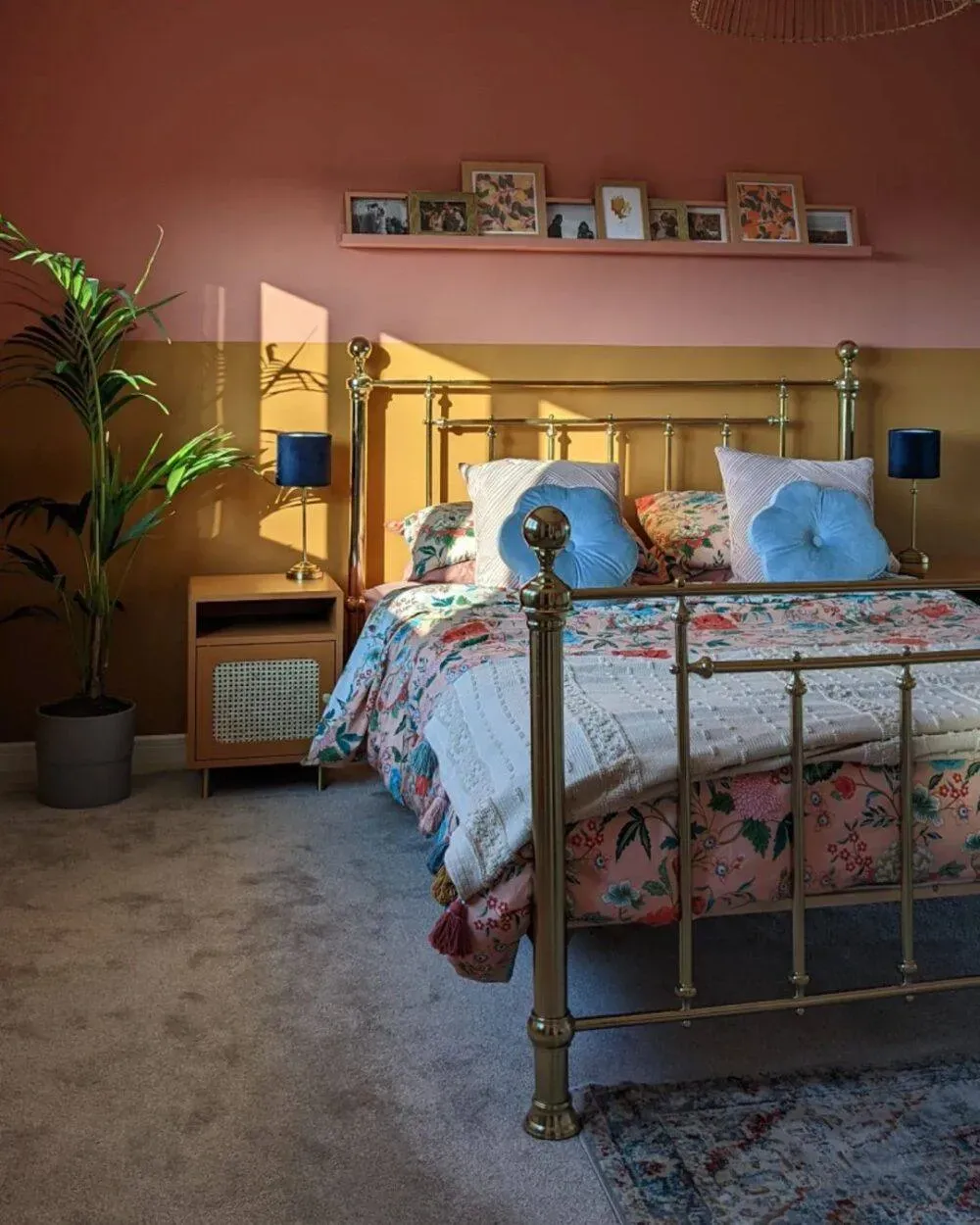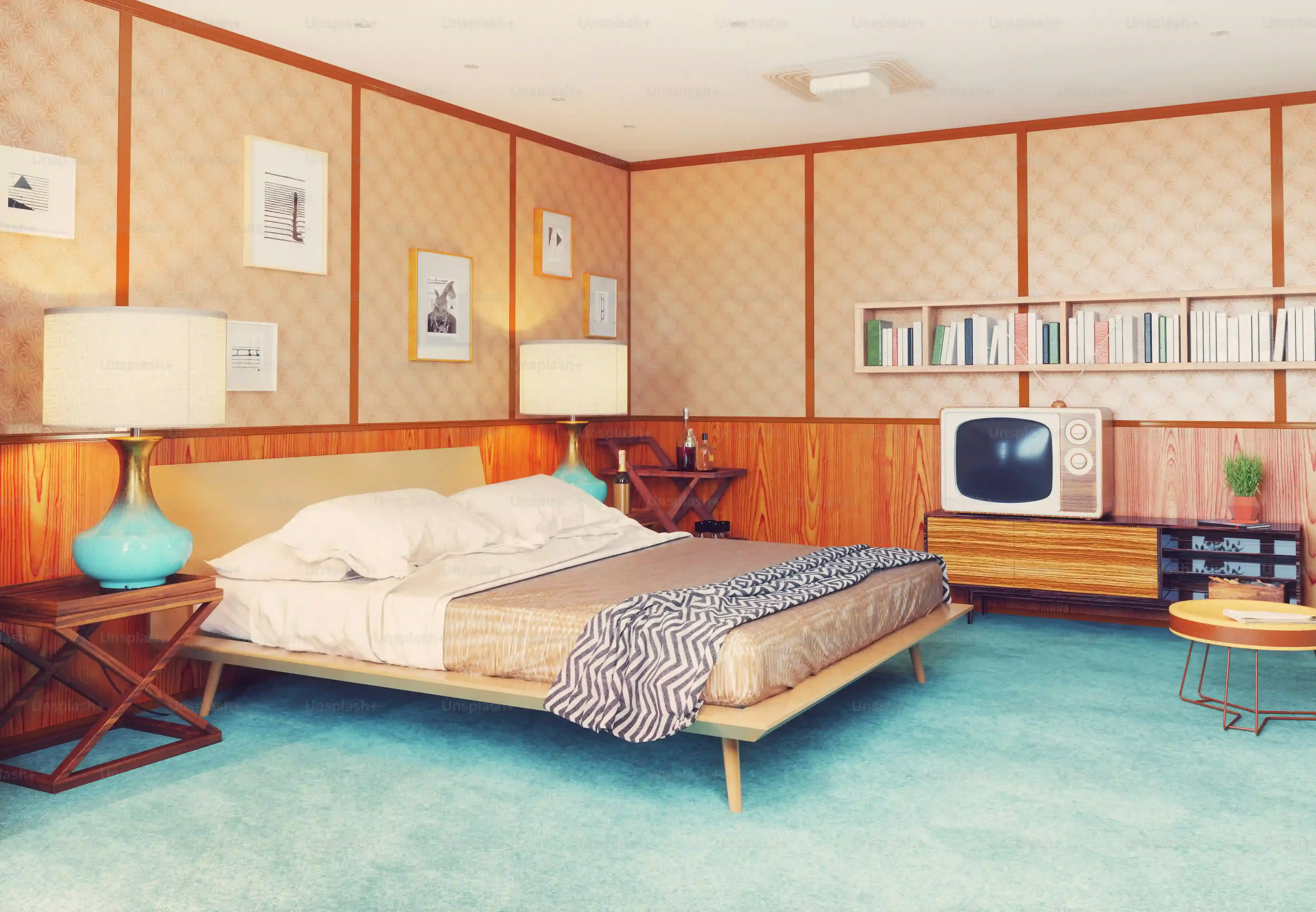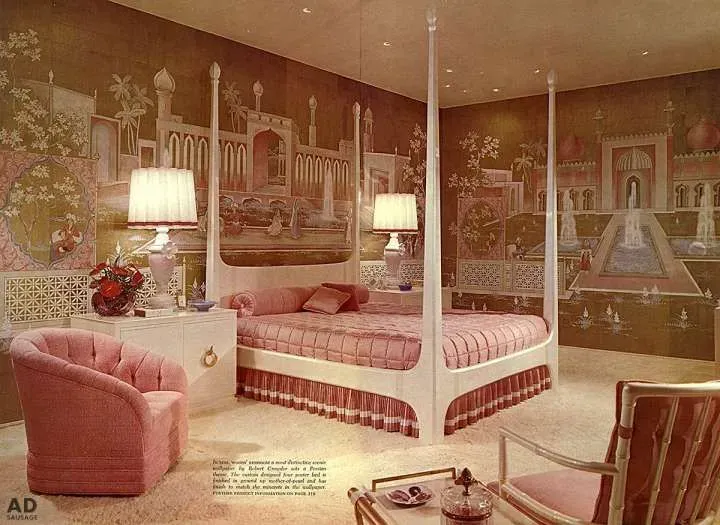Table of Contents
Step into a space that feels both nostalgic and undeniably cool. The 1960s gave us more than just bell bottoms and rock and roll; it delivered a distinct design sensibility that still resonates today. If you're tired of bland, mass-produced furniture and crave a bedroom with actual personality, diving into the world of 60's style bedroom furniture might be your next move. These pieces aren't just old; they often boast quality craftsmanship, unique materials, and shapes that simply aren't common in modern manufacturing. Think clean lines mixed with playful curves, warm woods, and maybe a splash of unexpected color. It's about creating a sanctuary that feels curated, not cataloged. In this article, we'll dig into what makes 60's style bedroom furniture so enduringly popular, how to spot authentic pieces, where to find these vintage treasures, and most importantly, how to weave them seamlessly into your contemporary living space without making your bedroom look like a museum exhibit or, worse, your grandma's attic. Get ready to inject some genuine character into your nightly retreat.
Why 60's Style Bedroom Furniture Still Feels Fresh
Why 60's Style Bedroom Furniture Still Feels Fresh
Built to Last, Designed to Impress
Look, let's be honest. A lot of furniture made today feels... temporary. Particle board and flimsy veneers dominate the market. That's not the case with much of the 60's style bedroom furniture you find. Craftsmen back then often used solid wood – think walnut, teak, rosewood – materials that age gracefully, not disintegrate. These pieces have already stood the test of time, surviving decades of use, moves, and changing trends. There's an inherent quality, a sturdiness you can feel just by opening a drawer or testing the weight of a headboard. It's furniture with integrity, designed when things were built to be kept, not replaced every few years.
Shapes That Break the Mold
The 1960s weren't afraid to experiment with form. While some pieces feature the clean, minimalist lines of Scandinavian design, others lean into more sculptural, even playful shapes. You see tapered legs, floating drawers, and unique hardware that you just don't find in today's big-box stores. This variety means 60's style bedroom furniture offers options beyond the standard rectangular box. A dresser isn't just a place to store clothes; it can be a piece of art. A nightstand isn't just a surface for a lamp; it can have a cantilevered top or hidden compartments. This visual interest keeps a room from feeling sterile and predictable.
- Tapered legs
- Floating drawer designs
- Unique, often sculptural hardware
- Warm, natural wood tones (walnut, teak)
- Mix of clean lines and gentle curves
Adding Soul to Your Space
Every piece of vintage 60's style bedroom furniture comes with a story, even if you don't know its specific history. It's lived a life before it got to you. That slight patina, the tiny ding that tells of a past adventure, these imperfections aren't flaws; they're character marks. Bringing a vintage dresser or a retro headboard into your bedroom instantly adds depth and personality that brand-new items struggle to replicate. It prevents your room from looking like a showroom display and makes it feel like a home, a place that's been lived in and loved. It's furniture with soul.
Spotting the Signatures: What Defines 60's Bedroom Pieces
Spotting the Signatures: What Defines 60's Bedroom Pieces
More Than Just Old Wood: Materials and Build
Alright, so you're browsing online or poking around an antique shop, and you see a dresser or a nightstand that *looks* like it might be from the 60s. How do you know for sure it's got that authentic vibe? First off, feel the weight. Genuine 60's style bedroom furniture, especially the good stuff, is often made from solid hardwoods like walnut, teak, or sometimes rosewood. These woods aren't just pretty; they're dense and durable. Particle board wasn't the go-to cheap option it is today. Look at the joinery too. Dovetail joints on drawers are a good sign of quality craftsmanship from that era, not just glued-together corners. Check the back panels and drawer bottoms; often they're solid wood or sturdy plywood, not flimsy cardboard.
The Devil's in the Details: Legs, Pulls, and Form
Beyond the basic build, the design details are dead giveaways for 60's style bedroom furniture. Tapered legs are a classic. They start thicker at the top and narrow towards the floor, giving pieces a lighter, almost floating appearance. Look at the hardware. Drawer pulls and knobs from the 60s range from simple, elegant metal or wood designs to more abstract or sculptural shapes. Sometimes they're integrated seamlessly into the drawer front itself. Consider the overall form. Is it a boxy rectangle, or does it have subtle curves, perhaps a slightly bowed front on a dresser, or a headboard with a unique, sculpted shape? Mid-century modern influences are strong here, emphasizing clean lines but often with a playful twist.
Key Features to Look For:
- Solid wood construction (walnut, teak, rosewood common)
- Quality joinery (dovetail drawers)
- Tapered or slender legs
- Distinctive, often minimalist or sculptural hardware
- Clean lines mixed with organic or geometric shapes
- Integrated handles or pulls
- Bowed or curved fronts on case goods
Hunting for Treasures: Finding and Restoring 60's Style Bedroom Furniture
Hunting for Treasures: Finding and Restoring 60's Style Bedroom Furniture
Where the Wild Things Are: Your Vintage Hunting Grounds
Alright, so you're convinced you need some authentic 60's style bedroom furniture in your life. Where do you actually find this stuff? Forget the big chain stores; they're selling reproductions that lack the soul and build quality. Your best bets are often places where furniture goes for a second act. Think local antique malls, vintage shops, and estate sales. Online marketplaces like eBay, Etsy, and specialized vintage furniture sites are also goldmines, though you need to factor in shipping. Don't overlook local classifieds or Facebook Marketplace either; sometimes people just want to clear out a relative's house and don't know the value of what they have. Persistence is key here; finding the perfect piece of 60's style bedroom furniture takes patience and a bit of digging.
Kicking the Tires: What to Check Before You Buy
Spotting a cool dresser is one thing, but making sure it's a solid investment is another. Before you hand over your cash for that piece of 60's style bedroom furniture, give it a good inspection. Open and close all the drawers. Do they slide smoothly, or do they stick and wobble? Check the joints; are they tight or loose? Look for signs of major damage like deep gouges, large veneer chips that are hard to repair, or structural cracks. Is the piece wobbly? That could indicate loose joinery or a warped frame. Smell it too – mustiness or strong odors can be tough to get rid of. Don't be afraid to flip it over (carefully!) to check the legs and the underside. A little wear and tear is expected and adds character, but major structural issues or extensive damage mean you might be taking on a bigger project than you intended.
Inspection Checklist for 60's Furniture:
- Drawer function (smoothness, stability)
- Joinery tightness (legs, frame, drawers)
- Surface condition (veneer chips, deep scratches, water rings)
- Structural integrity (wobbles, cracks)
- Odors (mustiness, smoke)
- Hardware condition (loose, missing, damaged)
- Legs and underside (damage, repairs)
A Little Elbow Grease: Basic Restoration Tips
Found a promising piece of 60's style bedroom furniture but it needs some love? Don't be intimidated. Often, all it takes is a good cleaning and perhaps a little refinishing. Start by cleaning the piece thoroughly with a mild wood cleaner. Sometimes, years of grime are hiding beautiful wood grain. For minor scratches or dull finishes, a wood polish or a product specifically designed for restoring mid-century furniture can work wonders. If the finish is significantly damaged or you want a different look, you might need to strip and refinish it, which is a bigger job but rewarding. Loose hardware can often be tightened or replaced. Sticky drawers might just need a little wax on the runners. Approach restoration as bringing out the piece's inherent beauty, not trying to make it look brand new off the assembly line.
Making it Yours: Integrating 60's Pieces into Modern Bedrooms
Making it Yours: Integrating 60's Pieces into Modern Bedrooms
Balancing Old and New: It's Not a Time Capsule
So you've scored a killer piece of 60's style bedroom furniture – maybe a sleek walnut dresser or a cool, sculptural headboard. Now what? The goal isn't to recreate your grandparents' bedroom circa 1965. It's about making these pieces work *with* your current style, letting them add character and warmth without making the room feel like a museum exhibit or a theme park ride. The trick is contrast. Pair that vintage wooden dresser with clean, modern art on the walls. Use crisp, contemporary bedding on a bed with a retro headboard. Think of the 60's piece as the star, and your modern decor as the supporting cast that makes it shine. Too many vintage items can clutter the look and make it feel dated, but one or two thoughtfully placed pieces of 60's style bedroom furniture can elevate the entire room.
Placement and Purpose: Letting Pieces Serve You
Where you put your 60's style bedroom furniture matters. A long, low dresser from the era works beautifully under a window or as a media console (if you're brave enough to put a TV on it, which some purists might scoff at). Nightstands with tapered legs can bring a touch of elegance to either side of a contemporary bed. A vintage vanity can become a chic desk or a dedicated spot for getting ready. Think about function first, then form. How will this piece actually make your life easier or your room more functional? Don't just buy something because it's old and looks cool; make sure it has a purpose beyond gathering dust. And for goodness sake, measure your space before you buy. That "petite" dresser in the antique shop might eat up your entire wall at home.
Ways to Integrate 60's Pieces:
- Use a vintage dresser as a TV stand or console.
- Flank a modern bed with 60s nightstands.
- Turn a retro vanity into a writing desk.
- Swap a standard headboard for a unique 60s design.
- Place a single statement chair in a corner.
- Use a record cabinet for actual records (or just storage).
Mixing Textures, Colors, and Eras
Don't feel confined to only mid-century modern items just because you have one piece of 60's style bedroom furniture. Great design often comes from mixing periods and textures. That warm walnut dresser can look stunning next to a plush, contemporary rug or against a wall painted a deep, modern color like navy or charcoal. Introduce different materials – metal accents, glass lamps, soft textiles. The key is finding a cohesive color palette and a consistent level of formality or informality. Your 60s piece should feel like it belongs, not like it was dropped in from another dimension. It takes a bit of an eye, but trust your gut. If it feels right and looks balanced, you're on the right track. Sometimes, it's the unexpected combination that makes a room truly sing.
Your Bedroom, Unboring: Wrapping Up the 60s Vibe
So there you have it. Bringing 60's style bedroom furniture into your space isn't about recreating a time capsule, unless that's your specific, slightly odd, goal. It's about choosing pieces with character, solid construction, and a story, instead of settling for flat-pack anonymity. You know what to look for – those clean lines, maybe some interesting legs, definitely not that particleboard stuff that smells vaguely of regret. Finding them takes a bit of effort, sure, but the payoff is a room that actually feels like it belongs to you, not just a page ripped from a furniture flyer. Integrate wisely, mix with what you already have, and avoid going overboard unless you really want to commit to the shag carpet. Your bedroom should be a place you actually want to be, and a few well-chosen 60's pieces can help make that happen, adding a bit of cool without trying too hard.
